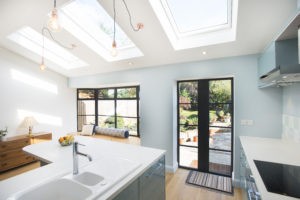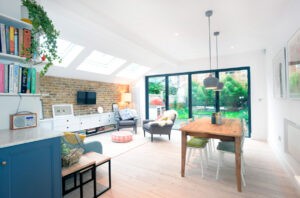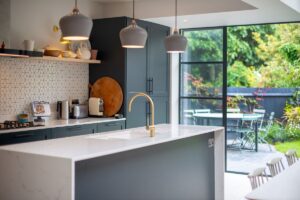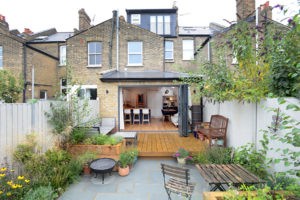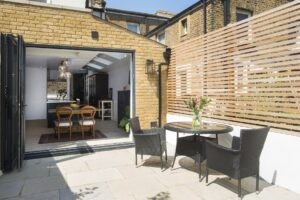As your family grows and evolves, so do your living requirements. Your once-perfect home can start to feel cramped and overcrowded. Therefore, adapting or extending your living spaces to suit the changing needs of your growing family is often the best and most cost-effective solution.
In this article, we’ll explore a wide range of solutions and design ideas that will help you adapt or extend your home and create spaces that meet the needs of your growing family but also anticipate your future requirements. We’ll start by exploring how to craft nurseries and bedrooms for toddlers that provide comfort, safety, and a nurturing environment as they grow into young children. We’ll also discuss ways to expand living areas and incorporate play areas that fuel their imagination while keeping them engaged.
As the years go by and your young children enter their teenage years, we’ll guide you through the process of creating adaptable spaces that reflect their new interests and need for independence. We’ll provide you with design solutions that can easily transform from study areas to creative havens or social hangouts with a simple rearrangement.
Furthermore, we understand the importance of caring for your elderly parents or older family members without compromising their ability and freedom to make independent decisions. We’ll share insights on how to design spaces that offer privacy and comfort, ensuring they have their own domains within the home while remaining connected to the family unit.
Lastly, we’ll explore the concept of flexible spaces, how to optimise room layouts, storage solutions, and multi-purpose areas that effortlessly cater to different family activities and create an environment that fosters both togetherness and personal space. Through practical tips, design inspiration, and expert advice, we will inspire you to transform your home to accommodate your growing needs as a family.
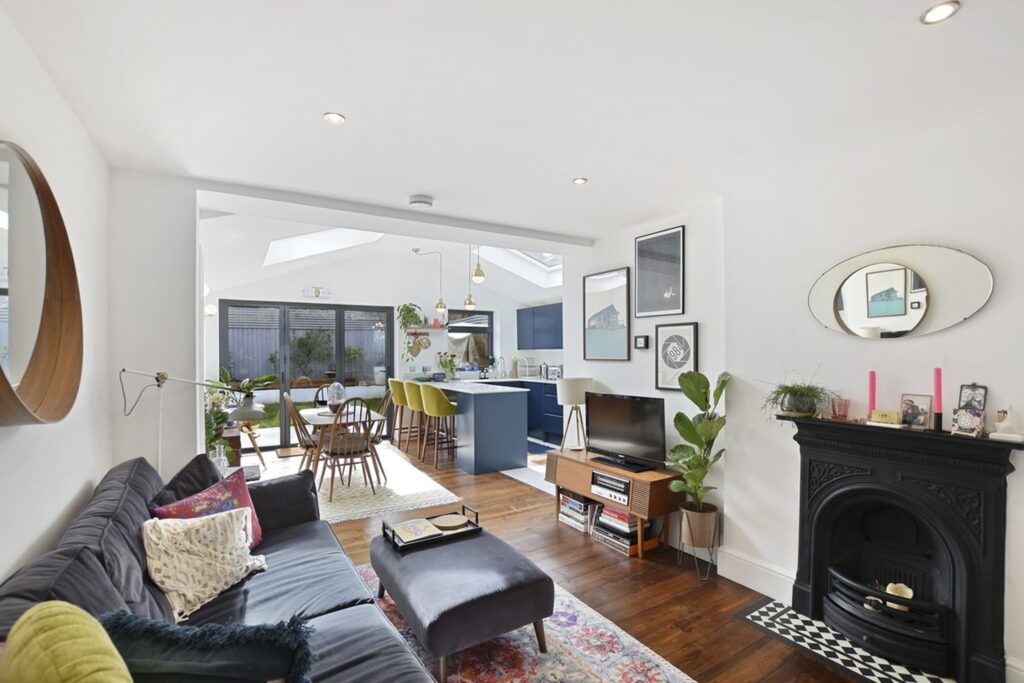
Design for Newborns & Young Children
Welcoming a newborn into your home is an incredibly special moment, but it also brings with it the need for additional space and specific design considerations. Constructing or designating a dedicated nursery space or bedroom provides a nurturing environment for you and your newborn. Consider factors such as natural lighting, soft colour palettes, furniture and furnishings that promote safety and comfort. Explore themes and home decor that reflect your style while stimulating your baby’s senses.
As your children grow older, their needs and activities change rapidly. Designate an open area or spare room where your children can play freely and safely. Utilise child-friendly flooring, such as rubber mats or carpeting, and incorporate storage solutions for toys and games. Consider adding interactive features like climbing walls, reading nooks, or imaginative play areas to foster creativity.
Children’s bedrooms should be both functional and fun. Optimise storage by incorporating built-in wardrobes, adjustable shelving, and multi-purpose furniture like loft beds or bunk beds with built-in desks. Allow your child to participate in the design process to reflect their personal tastes and interests.
As children grow, their need for study spaces increases. Create adaptable study areas by integrating desks and ergonomic seating that can be adjusted as they grow taller. Incorporate ample storage for books, stationery, and school supplies to keep the space organised and clutter-free.
Loft extensions offer the perfect solution for your children’s bedroom or designated play area, providing a unique and versatile space that ignites their imagination. With sloping ceilings adding an element of charm and cosiness, the loft becomes a haven where your children can dream, play, and grow. The ample floor area allows for the inclusion of play zones, storage solutions, and even a study area as your children grow older.
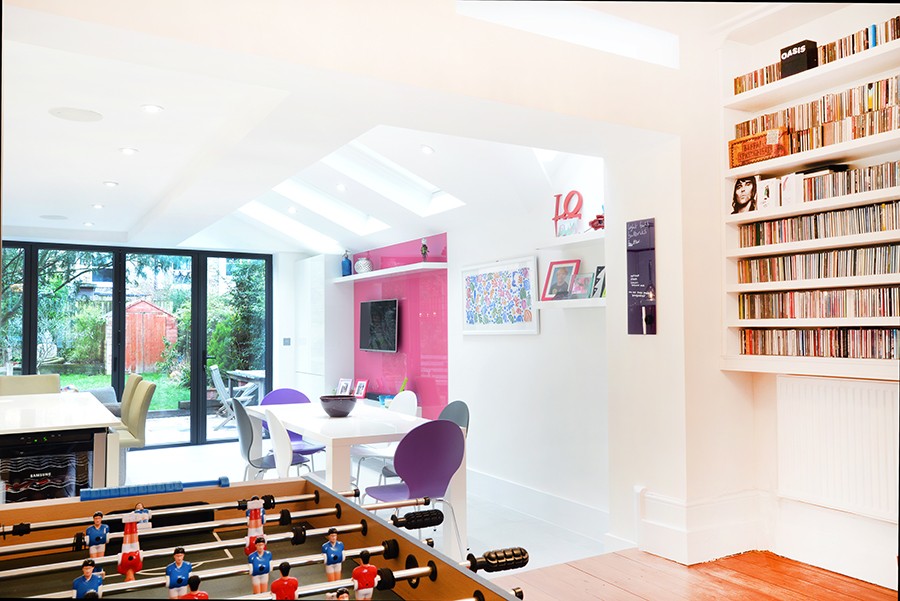
Creating Adaptable Spaces for Young Adults
Teenagers and young adults crave personal space and a sense of independence. They need areas where they can retreat and unwind. So, it’s essential to consider building or creating a separate lounge or outdoor den where they can socialise with friends, pursue hobbies and study. Incorporate soundproofing and comfortable seating arrangements to provide a space that feels like theirs.
Teenagers’ bedrooms should also be designed to adapt to their changing interests and needs. Incorporate modular furniture that can be reconfigured, providing space for activities like studying, socialising, and relaxation. They can choose colour schemes, artwork, and décor to suit their style.
Also, consider designating common areas in your home where teenagers can interact with family and friends. Create spaces that can easily transition from a movie night setup to a study group environment with flexible seating options. Consider incorporating new technology and different types of lighting to suit, such as task lighting for studying.

Designing for Elderly Family Members
For many, accommodating and caring for older family members or elderly parents can put a strain on your living space. Extending your home to create an annexe is a key consideration in multigenerational living. It can help them feel safe and secure in your home environment while also maintaining their independence.
If possible, ensure that essential living areas and bedrooms are located on the ground floor to minimise the need for stairs. Install handrails and ramps for more effortless mobility and widen doorways to accommodate wheelchairs or walkers if required. If you can, provide elderly family members with their own private space, complete with a bedroom and ensuite bathroom. This allows them to maintain their privacy while remaining connected to the family.
You may wish to consider incorporating universal design principles into the home, such as non-slip flooring, lever-style door handles, and well-lit spaces. Install grab bars and accessible fixtures in bathrooms to ensure safety and convenience.
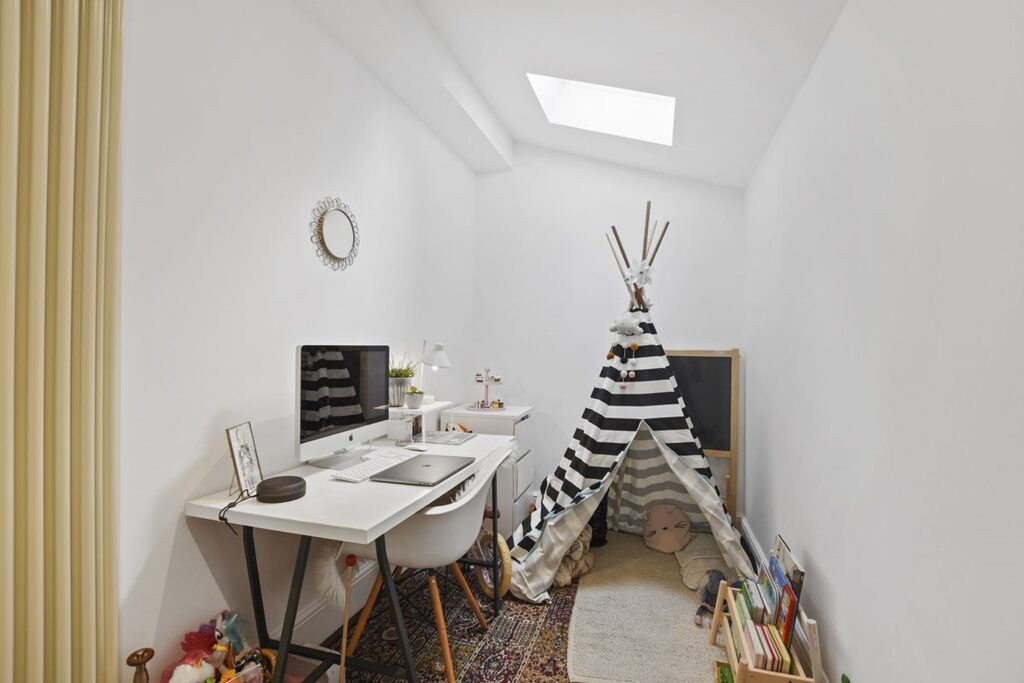
Creating Multi-Functional Areas for Family
Creating flexible spaces is essential for accommodating a growing family’s changing needs and activities. Open floor plans provide versatility and encourage interaction between family members. By removing unnecessary walls and eliminating separate living spaces, you can create a seamless flow between different areas and easily reconfigure the space to accommodate various activities.
Apart from individual spaces, creating multi-functional areas that cater to family bonding and personal privacy is essential. Designate an area where the entire family can come together for entertainment. This could be a media room with comfortable seating, a gaming area with consoles, or a dedicated space for movie nights complete with a projector and cosy and comfortable seating.
Expand your living space by incorporating outdoor areas like patios, decks, or gardens. These spaces can serve as retreats for relaxation, outdoor dining areas, or places for children to play. Consider adding features like fire pits or pergolas to enhance the ambience and usability of the outdoor space.
Convert small unused spaces in your home into cosy rooms where family members can retreat for solitude or enjoy a good book. These reading nooks or quiet retreats can be tucked away in corners, under staircases, or even within larger rooms, offering privacy and a peaceful environment.


